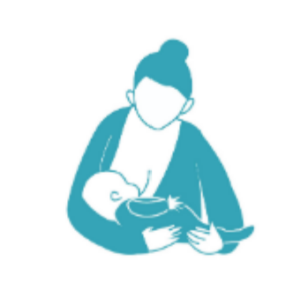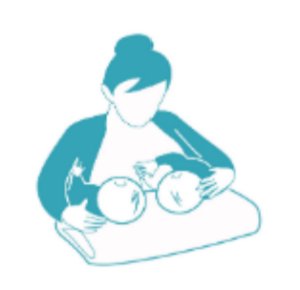Why is breastfeeding so important for a baby?
Breastfeeding your baby can be one of the most rewarding moments of parenthood. So why is breastfeeding so important for your baby? But often along this path doubts, questions and difficulties arise, although it would seem: here is the nipple, and here is the child’s mouth. What could be the problem? They are made for each other! However, not all so simple. Lactostasis, pain and cracked nipples, fears about the lack and quality of milk, expressing by hand or with a breast pump, comfortable positions for feeding, the compatibility of breastfeeding with the mother taking medications, feeding twins – these are just a few of the requests for consultations with a breastfeeding specialist every day . In this article, we will look at the most frequently asked questions to help you understand this topic.
Breastfeeding is the best, natural and biologically optimal way of feeding a baby with breast milk, which has many benefits both for the growth and development of the baby and for the health of his mother (1).
Breast milk contains all the necessary nutrients and antibodies, strengthens the baby’s immune system, protects him from infections and reduces the risk of obesity (2), prevents allergic reactions to cow’s milk, which can cause atopic eczema, colic, regurgitation, diarrhea and even intestinal bleeding. Children who are breastfed have a lower risk of allergic reactions and chronic diseases, and they appear later in life. In addition, breastfeeding strengthens the emotional bond between mother and child and reduces the risk of postpartum depression (3).
Are there any conditions of the baby or mother where breastfeeding is contraindicated?
Although breastfeeding is generally recommended for most mothers and babies, there are some situations when it should be avoided. Contraindications include the presence of HIV infection in the mother (4), active tuberculosis infection, as well as active CMV infection (important to consider when breastfeeding premature infants), active herpes viral infection and taking medications that may be dangerous to the baby (5). The compatibility of medications and breastfeeding can be checked on resources dedicated to this issue ( 6 & 7).
Contraindications for children include diseases such as galactosemia, maple syrup disease (with reservations) and some other rare conditions. For example, with phenylketonuria, it is allowed to breastfeed a child subject to strict adherence to a number of rules (8). Most often, during a mild infectious disease of the child and/or mother, breastfeeding can and even should be continued! When in doubt, your next best step is to seek help from your pediatrician or lactation consultant.
Why does early weaning and the transition to formula or artificial feeding occur?
One of the reasons is the lack of information about the benefits and importance of breastfeeding for the child and mother, ignorance and underestimation by medical workers of international documents on child feeding. The rule of the “golden hour” is not always observed – the first hour after birth, when the newborn is laid on the mother’s stomach and their first skin-to-skin contact occurs, during this time the mother’s production of oxytocin sharply increases, which not only stimulates the accelerated separation of the placenta from the uterus , but also contributes to the formation of a strong attachment with the baby. If the mother underwent surgery during childbirth, for example, a caesarean section, and cannot hold the baby yet, then the first skin-to-skin contact may be with the father! Unfortunately, this has not yet become routine practice everywhere in the world.
In a maternity hospital, mother and baby often lie separately, and not all women know about the need for regular pumping. When a woman has difficulty latching, sometimes at the department the children are supplemented and fed without medical indications from bottles and nipples, which can also subsequently negatively affect the development of lactation and the health of the baby (9 и 10). An alternative reason for early weaning is the lack of mandatory medical support at the state level and mothers’ lack of understanding of where to turn if a problem arises. Regarding the situation in the world, one of the main factors for switching to artificial feeding is, among other things, very modest maternity leave (11) and strong marketing by formula manufacturers.
How long should you breastfeed your baby?
According to WHO, it is recommended to exclusively breastfeed for the first 6 months of a child’s life, and then, in parallel with the introduction of complementary foods, continue breastfeeding for up to 2 years or longer, if both mother and baby are comfortable continuing (12).
How do you know that your baby is getting enough milk and is latching correctly?
When latched correctly, the baby gains weight well, and the mother does not feel pain during and after feeding. Weight is assessed by a pediatrician by comparing the baby’s indicators with weight and height data in special tables that take into account the child’s age and gender. Regular visits to the doctor allow you to monitor the baby’s growth and development over time.
With proper latching, the mother’s breasts empty well, become soft after feeding, the nipples are without cracks, do not hurt, are not flattened or slanted. If the situation is the opposite, then this is a reason to immediately seek help from a specialist. (13)
Which breastfeeding position should you choose?
There are several positions for feeding; the mother should feel comfortable in any position.
You can try different options to see what works best for you and vary the position depending on the time of day, your activity level, and your baby’s age. (14). Here are some basic breastfeeding positions:
– classic “cradle”: the mother sits relaxed, her shoulders are not tense, a pillow or cushion is placed under her back for support, a cushion or folded blanket can also be placed under her knees for comfort, the baby is located on the crook of her elbow, the mother supports him with her hands, while the baby’s belly turned towards mother’s belly

– “cross cradle”, when the baby lies in the same position, but on the other arm, which provides better support for the neck and shoulders

– “lying on its side”, a favorite position for many, when the mother can feed the baby and rest, which is especially convenient during night feedings

– “biological feeding”, when the mother lies on her back and the baby on top of her stomach

– after a caesarean section and for mothers of twins, the “under-arm” position is perfect, when the mother sits and the baby lies along her arm on the side, with his legs towards the back of the seat


There are many positions, but the main indicator of correct attachment is the absence of pain in the mother during and after feeding. However, during the first few feedings, it is acceptable to experience discomfort during the first 10 seconds, which is considered normal. There should be no further pain. If discomfort persists when latching on, be sure to seek help from an experienced lactation consultant to find the problem and correct latching.
Is it possible to prepare for breastfeeding?
Of course! Here are a couple of steps that may help you:
Step 1
Understanding the structure of the breast and training latching
To be prepared for breastfeeding, you need to understand how it works. To do this, you need to study the basics of the anatomy of the mammary glands, the physiology of lactation, understand how the production and delivery of milk occurs, and how the child influences this process. Courses for expectant parents often provide an opportunity to learn this and practice basic breastfeeding positions and latching on models.
Step 2:
Studying “red flags”
“Red flags” are signs of dangerous conditions in which you should seek help from a doctor as soon as possible. Below are several examples of such “flags” from the child.
You should contact your pediatrician as soon as possible if:
– after 10 days of life the baby is still losing weight
– by the third week of life, the child has not regained birth weight
– gain of less than 125 g/week for a child in the first three months of life
– the child is lethargic, cries weakly, sleeps a lot
– loose skin, decreased muscle tone
– sucks reluctantly, rarely swallows
– stools are rare and dry, and urine is concentrated 6 or less times a day
As you can see, we always pay attention to the baby’s weight gain!
It is best to seek advice on any matter, even the most trivial (as it seems to you), if you have self-doubt and doubts. More often than not, this will prevent more serious consequences.
Do I need to somehow prepare my breasts for feeding?
No special preparation is required. Many new mothers worry about the size and shape of their nipples, doubting whether they are suitable for feeding their baby. They worry that the nipples are either “flat”, or “inverted”, or too large. It is extremely rare that the connective tissue is positioned in such a way that the nipple is truly flat and difficult for the baby to take into the mouth. This will not interfere with breastfeeding, but may require some special help at the start (15). There are also special pads to help with the first attachments if the nipple does not form or is difficult to grasp in the baby’s mouth (16).
Where can I find breastfeeding support groups and what literature should I read?
There are many Russian and English language resources available for parents looking for support and information about breastfeeding. These could be breastfeeding departments and support groups at perinatal centers (as, for example, in the Children’s Children’s Clinical Hospital in Moscow or the Balashikha Medical Center), articles by breastfeeding consultants, websites of organizations (Union of Pediatrics,orАКЕВ, WHO, AAP). There are even apps for mobile devices that can help you track the frequency and timing of feedings (such as the Baby-Tracker app).
What are the dangers of bottle feeding?
The baby may become accustomed to sucking from a bottle and refuse to breastfeed. The bottle provides easily accessible nutrition, which can reduce baby’s interest in the breast and cause problems with latching. There are suggestions that when sucking from a bottle or pacifier, the mechanics of tongue movement change, which during subsequent attempts to breastfeed can provoke a violation of attachment and damage to the nipple. However, some parents note that their baby easily switches between the breast and bottle.
If it is necessary to supplement with expressed milk, the priority is still to use non-sucking objects such as a syringe, cup or spoon. This allows you to maintain the baby’s interest in the breast and avoid possible difficulties with subsequent feedings (17 & 18)
What is thrush?
Thrush during breastfeeding (remember that vaginal candidiasis also exists) is an infection caused by excessive proliferation of the fungus Candida albicans. It grows actively in moist and warm places, such as the nipple area or baby’s mouth, so it is a common problem during breastfeeding. If your nipple is sore, red or itchy, your nipple is red and shiny, or if your baby has white spots in his mouth, it could be thrush (19). Contact your pediatrician or lactation consultant for monitoring and treatment.
Is it possible to get pregnant while breastfeeding?
Yes, it is possible, although it is unlikely. The fact is that when breastfeeding, a woman’s body releases prolactin, which inhibits the maturation of a new egg, and also reduces the production of estrogen and progesterone. Therefore, if prolactin is actively produced, then the chances of getting pregnant are very low. There is a method of lactational amenorrhea, which is effective only if three rules are strictly followed: 1) menstruation did not return, 2) baby under 6 months, 3) The child is exclusively breastfed (without complementary foods). In this case, the risk of becoming pregnant is less than 1% (20).
However, if one of the rules is not followed, the method is ineffective.
If you want to avoid pregnancy, talk to your doctor about contraceptive methods that are safe for you and your baby, including intrauterine devices, implants, combined oral contraceptives, and barrier methods.
Can I take emergency contraception while breastfeeding?
Emergency contraception can be used during breastfeeding. Progestin-type drugs are preferable to other methods of hormonal contraception during breastfeeding. For additional safety, it is recommended to breastfeed the child a week after taking the drug (according to WHO); according to other sources, it is allowed to return to breastfeeding after 24 hours (21).
Is it possible to drink coffee while breastfeeding?
Yes, you can drink coffee while breastfeeding! Although small amounts of caffeine pass through milk, up to 200-300 mg of caffeine per day is considered compatible with breastfeeding (22).
Can I take ibuprofen or paracetamol while breastfeeding?
Yes! Ibuprofen and paracetamol (active ingredient: acetaminophen) are safe choices for breastfeeding mothers to relieve pain. Research shows that only trace amounts are transferred to the baby through breast milk. In addition, these drugs are not contraindicated for use in infants (23 и 24).
Is it possible to smoke while breastfeeding?
Highly not recommended! Nicotine and other chemicals found in tobacco can affect the quality of your milk and your baby’s health. Infants exposed to nicotine through breast milk are more likely to have sleep problems. Additionally, infant exposure to secondhand smoke can lead to sudden infant death syndrome (25), respiratory diseases (26), ear infections and liver damage.
Is it possible to breastfeed after mammoplasty?
First, talk to your plastic surgeon if you have had breast surgery. There are different surgical protocols, some of which can preserve glandular tissue (27). If you are reading this article before surgery, be sure to tell your plastic surgeon that you want to breastfeed in the future and ask him to do everything possible to preserve the glandular tissue, nerves and ducts of the breast.
I have nipple piercings. Will this affect breastfeeding?
Nipple piercing can affect the development of lactation and increase the risk of blocked ducts, lactostasis and mastitis if nerves and ducts were damaged during the piercing, and may also prevent your baby from breastfeeding (28, 29 и 30). Some babies have trouble latching or spill milk from their mouth when feeding from a pierced nipple. It is recommended to remove the piercing before breastfeeding, and if difficulties arise, seek help from a lactation consultant.
How can I lose weight and maintain breastfeeding? How will this affect the child?
It is advisable not to make radical decisions and not switch to strict diets and exhausting workouts. Within 1.5-2 months after the birth of the baby, your lactation will be established, and you can carefully and slowly, if your condition allows, return to the training regime. The basic rule for losing weight: burn more calories than you consume. Milk production requires approximately 500-700 kcal/day. Therefore, if you consume the recommended amount of calories – up to 2000-2300 kcal per day (if you are sedentary) and up to 2400-3000 kcal (if you are active), the kilograms will gradually go away. Regular aerobic exercise, such as vigorous walking, running, swimming or cardio, improves fitness in breastfeeding mothers (31). You can breastfeed your baby right before exercise to relieve breast pain and reduce discomfort.
Is it true that breastfeeding helps during infant vaccination?
Yes, breastfeeding can be an excellent distraction for a child while vaccinations take place. Sucking on the breast redirects the baby’s attention and helps reduce the discomfort associated with the injection (32).
How to combine study, work and breastfeeding?
As Douglas Adams wrote: “Don’t panic!” Many mothers successfully combine work or study with breastfeeding. Regular expression of milk by hand or with a breast pump, maintaining night feedings, as well as support from family and colleagues can be a lifesaver in this matter.
Detailed information about expressing techniques and storing breast milk can be found on the websites of organizations such as the WHO, La Leche League or the Association of Breastfeeding Consultants (33 & 34).
Conclusion
It is important to remember that every situation is different and you should always consult your doctor or lactation consultant for more information and support specific to your situation.
Breastfeeding is a special time in the life of mother and baby that can be a wonderful and emotionally bonding experience for both. You will succeed! And we, doctors and lactation consultants, will help you with this 😉
